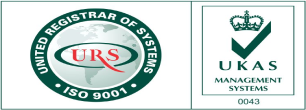
Today’s industry is fast-paced, driven by innovation, flexibility, and getting products to market faster than ever before, creating a need to find the right tools to handle the challenges that come with new product development. Siemens PLM Software accomplishes all this by providing end-to-end product life cycle management, enabling the optimal execution of all development phases from concept to reality. The following blog discusses how Siemens PLM solves PLM problems to help organisations stay ahead in a competitive business environment.

Master data management to achieve collaboration
The main advantage of Siemens PLM software lies in the master data management of the entire product life cycle. Most organisations face the problem of product information being scattered across departments, making team collaboration difficult. Siemens PLM solves this problem because it can create a single source of truth where all product data, including design, specifications, documentation, and simulation results, are in the same place.
Centrally managed data allows design engineers and production teams to stay on top of the latest information, thus avoiding process errors caused by outdated information, not or completed.
Simple Turn-To-Production Process
This is where Siemens PLM software comes in helping companies develop fully integrated platforms that cover all stages of the product life cycle – from concept and design to simulation, production and service. Most importantly, combining these components in one series eliminates the need for faulty tools and manual data transfer, which can reduce the development process.
This software is an important part of the workflow management tools, which helps to automate the daily tasks so that the various stages of development flow smoothly into the next phase.
Design and Engineering Practice
As such, it becomes a critical element in successful design development across teams and industry processes. Siemens PLM software allows designers to collaborate on engineering, allowing teams working in different physical locations to collaborate on prototypes in real-time. This cloud-based tool provides a place where designers, engineers, and construction teams can share and review designs, provide feedback, and provide advice without delay during the design process.
This collaborative environment minimises design elements, thereby reducing errors and misunderstandings because everyone works from a common template that is always up-to-date. Siemens PLM software facilitates communication, collaboration and creative collaboration to accelerate product development.
Extensive simulation and verification
Before the design is introduced into production, it is very important to verify through simulation to ensure that performance and safety standards are met. Siemens’ own PLM Software includes advanced simulation tools, allowing engineers to test designs in the real world right from the start. Whether it’s structural analysis or thermal/fluid analysis, Siemens PLM meets the needs of problem identification early in the design process and minimises the number of physical models required.

Conclusion
Siemens PLM software manages everything from idea generation to completion and marks the beginning of the product life cycle. Siemens PLM software combines comprehensive data management, real-time performance, advanced simulation, and digital capture in a single software package to help increase efficiency, increase time to market, and improve quality. It provides solutions for companies that want to stay ahead of today’s ever-changing market as they develop, improve or modify their products and manage change. And ensure that the changes they introduce meet established industry standards.


